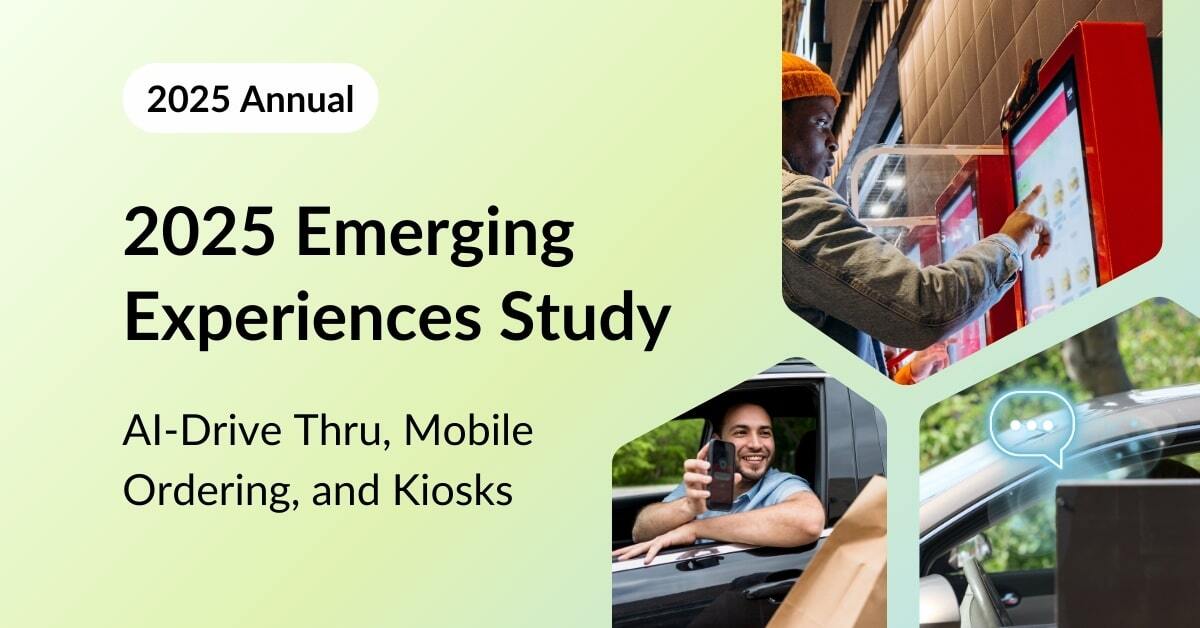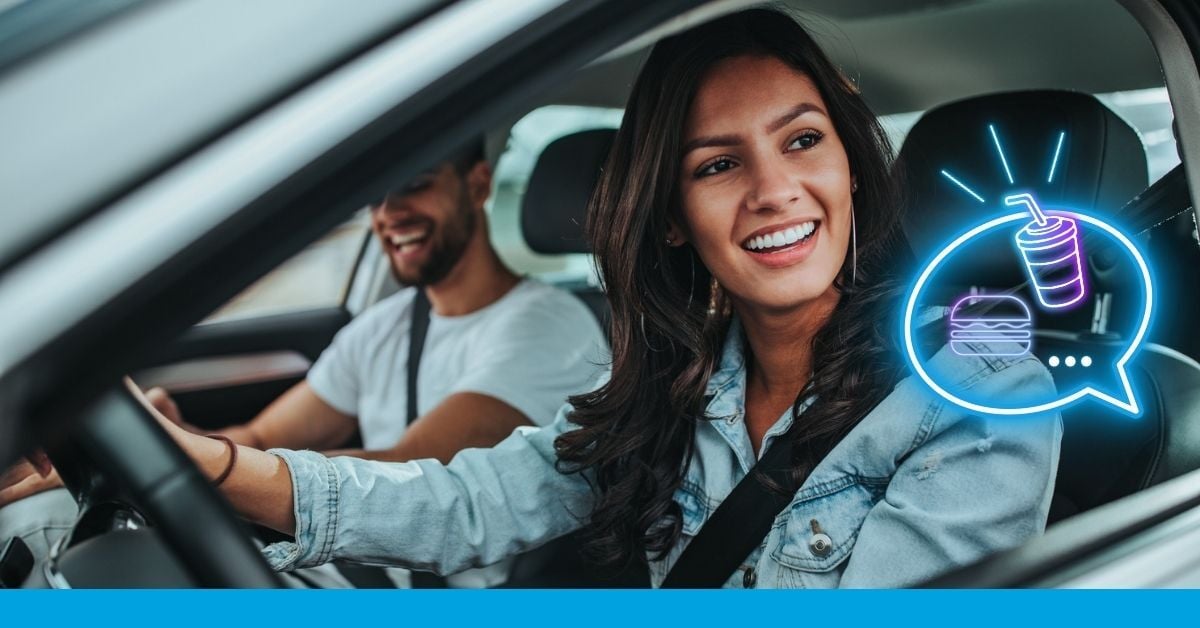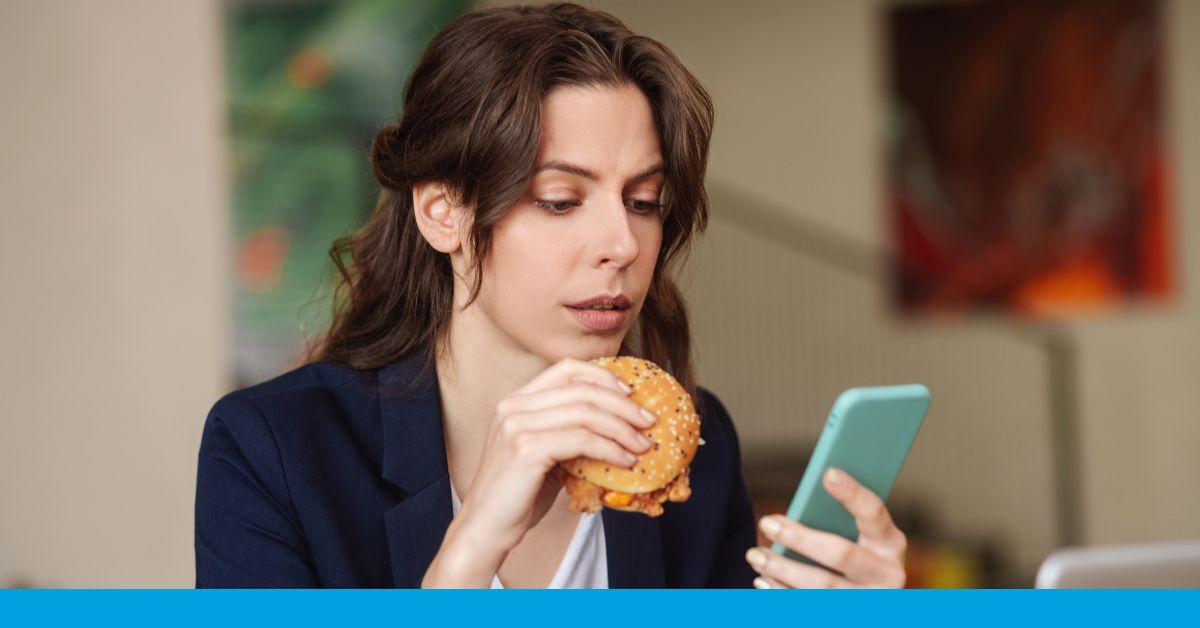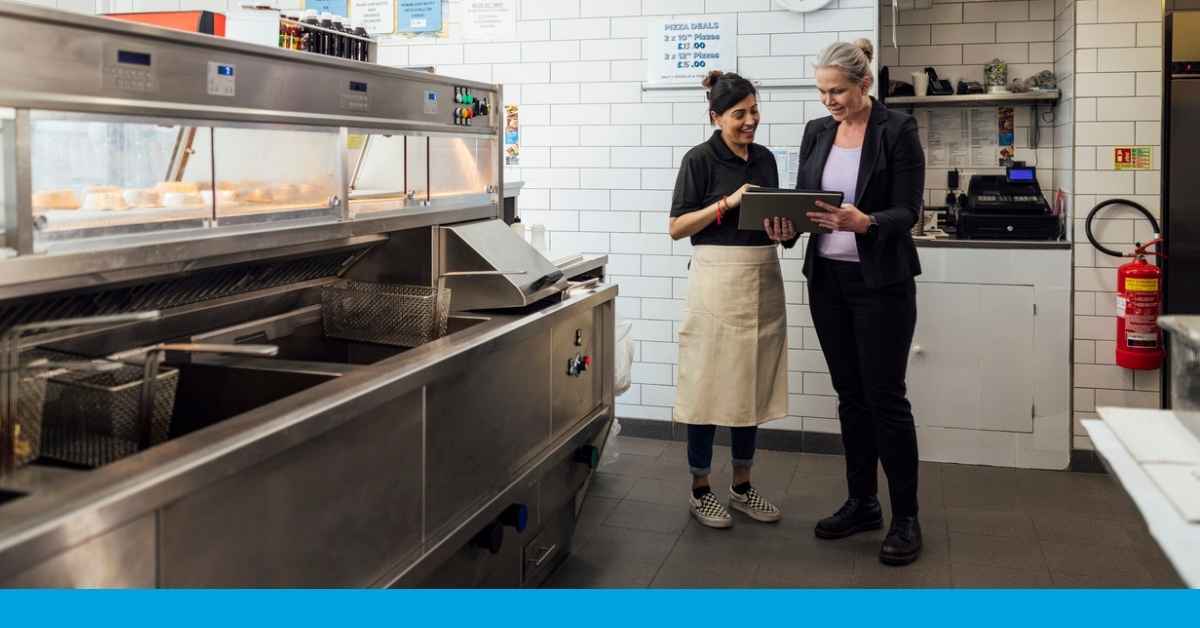Can a Voice AI Drive-Thru Become Your Best Order Taker?
“Heads up, AI is giving us a hand today” reads the label on the drive-thru speaker. Does that make you feel confident, or uncomfortable? Afterall, it...
6 min read
 Sarah Beckett
May 06, 2025
Sarah Beckett
May 06, 2025

Drive-thrus are talking back.
Kiosks are taking orders.
And mobile apps? They’re doing everything except handing you your fries.
Welcome to the new normal in the quick service restaurant industry.
The momentum behind this shift isn’t slowing down. Digital sales are projected to account for 60–70% of total sales among top fast-food chains by 2025. With that kind of transformation underway, it’s no longer a question of “if” brands should evolve. It’s about how well they’re executing when they do.
For our 2025 Emerging Experiences Study, we ran mystery shopping programs at 9 leading Quick Service Restaurant (QSR) brands to see how today’s tech-driven formats—Voice AI, mobile pickup, and in-store kiosks, are actually performing with real guests. The study was conducted in January 2025, with 40 mystery shops per brand. Shoppers placed real orders, each including a main, side, drink, and customization at both innovative and legacy locations.
The verdict? Innovation is showing up everywhere, but not always equally. Some experiences are fast, intuitive, even delightful. Others still have a few kinks to work out. What we found isn’t just about technology; it’s about execution, connection, and where the future of restaurants is headed next.
Let’s dive in.

Across the U.S., we tested new technology experiences at: Bojangles, Chipotle, Dutch Bros, McDonald’s, Panera, Shake Shack, Taco Bell, Wendy’s, and Wingstop.
Our mystery shoppers explored three emerging formats tied to today’s biggest restaurant trends:
Every interaction was benchmarked against traditional formats. Every second, every misstep, every wow moment? Captured.
Let’s look at how the future is unfolding, one order at a time.
The drive-thru is getting a new voice, and it’s not human. The idea behind Voice AI in the drive-thru is to cut wait times, reduce errors, and keep the line moving. It sounds futuristic, but it’s already live at major chains. The real test? Whether it feels as great as it sounds when you're the one behind the wheel.
Voice AI systems showed real promise. Across multiple brands, they delivered faster wait times, quicker service, and even higher friendliness scores at pickup. In fact, friendliness at pickup was rated higher for AI-led orders than traditional ones: 83% vs. 79%.
Let that sink in: When AI handles the routine, humans have more bandwidth to delight.
Taco Bell shaved off nearly 2 minutes of service time with Voice AI. Their guests also heard every word loud and clear as 100% of shoppers said the speaker interaction was easy to understand.
Even more impressive? The AI experience at one major chain exceeded benchmark averages across key metrics like taste, food temperature, accuracy, speed, friendliness, and overall satisfaction. Curious to find out which brand it was? Download the 2025 Emerging Experience Study.
Shopper Reflections:
“I enjoyed it very much. AI is exciting in all its uses, but the most memorable was being welcomed by AI.”

AI hasn’t mastered everything—yet.
Roughly 1 in 4 orders still needed a human to step in, especially when it came to handling customization requests. It’s important to note that the study methodology required the shopper to request a customization as part of their order.
Whether pickles on the side, light ice or no lettuce, a closer look at the data reveals that 65% of AI order issues stemmed from failing that customization request. This highlights a consistent weakness across multiple visits.
Some brands are already adjusting the blend, using AI for speed, and real humans for finesse. The full study shows where that balance is working best, as only one out of the 3 brands evaluated for Voice AI drive-thru surpassed the benchmark in order accuracy, which evaluates whether or not the order received by the customer was handed over correctly.
Shopper Reflections:
“The AI added five salads to my order — I had to speak up, and a human confirmed I only wanted one of each item.”
“I tried to modify my order, but AI kept saying it wasn't available. The staff eventually answered and said, ‘We got you, sir.’”

See how mystery shopping uncovers what’s working in your QSR innovation.
This one’s all about control and convenience. Guests order ahead through an app and skip the line entirely, picking up their food in-store or through the drive-thru. Brands are betting big on frictionless pickup. But is the whole process intuitive to the customer?
There’s no denying it. Mobile pickup is dominating the convenience game.
Dutch Bros’ drive-thru-only model hit the sweet spot: high marks for accuracy and friendliness, plus a perfect 100% taste score. At Chipotle, with its drive-thru-first Chipotlane format, the customer spent nearly 3 minutes less in the drive-thru at its mobile-lane prototype compared to the 2024 Annual Drive-Thru study average total time. When tech meets infrastructure, speed follows.
Even more promising? One QSR’s in-store mobile pickup locations had a 6-point edge in friendliness over its traditional format. Mobile order pickup guests were greeted or acknowledged 88% of the time—14 percentage points higher than the on-premises benchmark.
Shopper Reflections:
“The ordering process was easy and intuitive. The employee was able to verify my order, and it was delivered quickly. The employee was very friendly and welcoming.”


But a quick pickup doesn’t always mean a complete experience.
At several locations, guests weren’t welcomed. Orders weren’t confirmed. Upsells were missed. And at one brand, despite the time savings, shoppers scored the upselling experience 41 percentage points lower than the legacy format.
In one case, only 63% of guests described the pickup interaction as friendly, nearly 16 points below the study’s benchmark. A reminder that hospitality can’t be an afterthought, even when the app is doing most of the heavy lifting.
So what gives? It turns out, fast is only satisfying when the service moment feels personal.
Want to know which mobile model hit 100% satisfaction and cut pickup times in half?
Get a copy of our study below!

Self-serve kiosks put the ordering power directly in guests’ hands. No cashier, no rush, just tap, customize, and go. For restaurants, kiosks offer a chance to increase order size and cut down waiting times. But can a screen deliver the warmth of human service? That’s what we set out to find.
Kiosks are getting the job done. They’re quick, easy to navigate, and offer a strong sense of control.
At Panera, 95% of kiosk shoppers were offered a suggestive sale compared to just 75% at the counter. The brand also nailed pickup instructions and signage, making for a smooth overall process. But did the experience feel friendly? We break it down.
Another brand known for its tech-forward approach scored perfectly on food temperature, quality, and overall satisfaction. It also outperformed the on-premises benchmark in friendliness by 5 percentage points. Curious what made the difference? We’ve got the details in our report!
Shopper Reflections:
“It was super easy and fast to order on the kiosk. The food was delivered quickly and tasted so fresh and good! I was very satisfied with my visit.”

But here’s the reality: no screen can smile at you.
Across the board, friendliness ratings dropped at kiosk locations, and guests noticed. In fact, friendliness fell from 78% at the counter to just 66% at kiosks. McDonald’s recorded kiosk friendliness scores as low as 50%, showing the emotional gap guests are starting to feel and the impact of friendliness.
Shopper Reflections:
“The employee could have said hello, welcome, thank you.”
“I was not acknowledged or greeted when I arrived.”
Even tech has its off days. At one brand, 15% of shoppers ran into glitches while using the kiosk. It was an unexpected hiccup in what should have been a seamless process. We’re used to forgiving humans when things go wrong. But when the system built to avoid mistakes slips up, do we cut it the same slack?
Kiosks solve for speed and clarity, but without intentional hospitality, they can leave guests feeling invisible. The study reveals how some restaurants are closing that emotional gap with small changes that make a big difference. Download to see which brands nailed the balance.
This year’s study didn’t just revisit last year’s formats. It revealed tangible shifts in how guests experience emerging technologies. Here’s how 2025 stacks up against 2024:
The age-old challenge with technology has always been the same: how do you make it feel more human? Your guests want speed, but they also want connection. Winning in this next phase means connecting the dots between digital and personal. That looks like clear communication, well-trained staff who know when to step in, and ongoing effort to audit and improve every touchpoint.
To win, the smartest operators will use technology not to replace hospitality, but to make more room for it.
Want to know what it really takes to wow guests with tech?
Continue exploring this four-part blog series on the Emerging Experiences Study.
| Next: Can a Voice AI Drive-Thru Become Your Best Order Taker?

“Heads up, AI is giving us a hand today” reads the label on the drive-thru speaker. Does that make you feel confident, or uncomfortable? Afterall, it...

Let’s be real. QSR Mobile ordering isn’t the future. It’s already the now. Guests expect it. Operators rely on it. And for some brands, it’s the MVP...

From reducing costs to improving customer retention, efficient restaurant operations can significantly impact profitability.